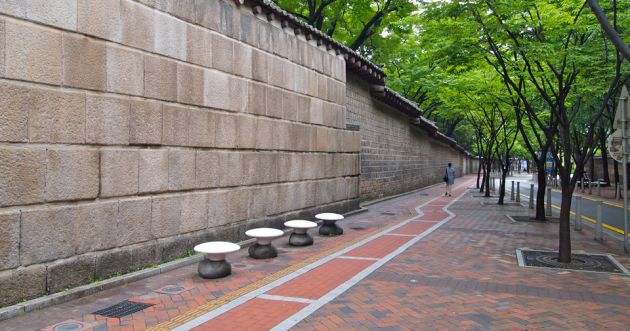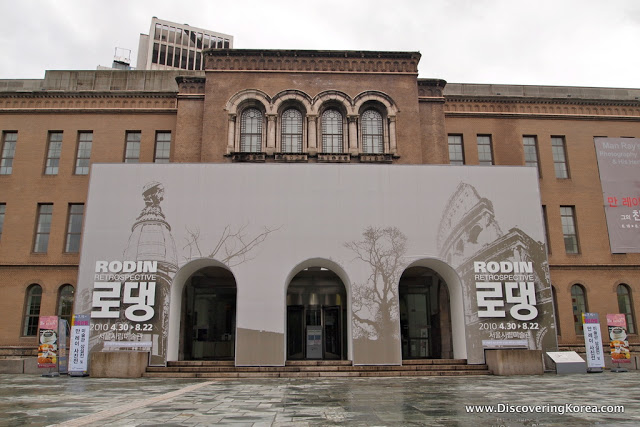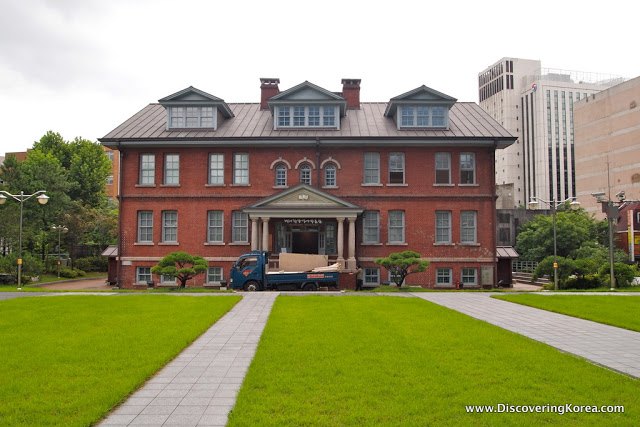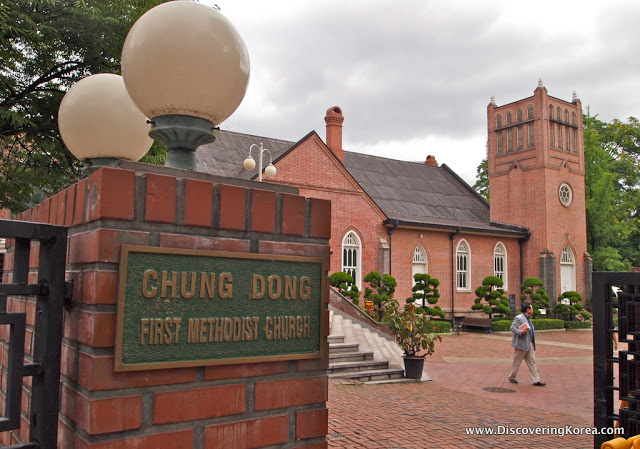Despite its central location in the heart of Korea’s capital, the historic Jeong-dong neighborhood in Seoul escapes much attention from residents and visitors, alike.

And yet, the quiet, tree-lined cobblestone streets flanked by stately palace walls are among Seoul’s most beautiful. Jeong-dong (정동) is also unique because it’s the best (and one of the last) places in this relentlessly modern city where you can feel what Seoul was like at the turn of the 20th Century.
After a century or more as the “Hermit Kingdom,” Korea slowly opened to the west in the late 19th Century, and Christian missionaries came to Seoul to build the nation’s first western-style schools and houses of worship.
Accordingly, great world powers at the time – Britain, France, Germany, the U.S. and Russia, all built their legations in the neighborhood surrounding Deoksugung palace (덕수궁).
Although many of these grand granite and red brick structures were destroyed over the years, an impressive number remain, and the neighborhood makes for one of Seoul’s best walking tours.

To see it for yourself, simply walk along Deoksugung palace’s southern wall until you reach a roundabout with three streets to choose from. The palace will be on your right, Korea’s first chapel will be ahead, and the Seoul Museum of Art (서울시립미술관) will be up the hill on your left.
Built in 1928 as a courthouse, the Romanesque-styled seat of authority was fittingly situated on ground that’s about six meters above its surroundings. Now home to the Art Museum, its distinguished architecture influenced other municipal buildings around the the nation.

Farther down that street is the eastern hall of the Paichai School (배재학당). Founded in 1885 by the American missionary Henry Appenzeller, he built the school after King Gojong denied his request to build a church.
Apparently the hall, which is considered one of Korea’s best examples of missionary school architecture, was the first western-style school house in Korea. Today it’s the site of the Appenzeller/Noble Museum (배재학당역사박물관).
If you continue a tour of the historic Jeong-dong neighborhood in Seoul andtake the second street, you’ll see a wealth of pre-colonial and colonial buildings.

Among them, the Chungdong First Methodist Church (정동교회) is the oldest. Built in 1897 by Appenzeller, the single story, red brick, country Gothic church features a three-story bell tower.
Farther down the street is the Simpson Hall and Sontag Hotel, both part of the Ewha Girls High School. The Sontag was once a popular spot for Seoul’s early expat community.

Among these buildings, however, my favorite is the elegant white tower that was once part of a grand Russian hill-top Legation (구러시아공사관).
Connected by tunnel to the palace, and home to King Gojong as he avoided capture or death at the hands of the Japanese, it’s a gorgeous Renaissance-style tower surrounded by a park.

The nearby and very modern Russian Embassy makes for a nice contrast.
Finally, the third street is among my favorites in Seoul. The road – lined on both sides by attractive stone walls – leads from the roundabout, past the U.S. Ambassador’s house and to the Central Hall of the Salvation Army (구세군 중앙회관).
Completed in 1928, the hall is a sturdy, red brick building designed in a neoclassical style. Oft forgotten, it’s one of Seoul’s finest examples of colonial architecture, and not to be missed.
For Your Information…
| Open: | 24 hours |
| Admission Price: | Free |
| Address: | Seoul Jung-gu Jeong-dong |
| Directions: | City Hall Station (#201/#132) on Lines 1 & 2, Exit 1 |
| Phone: | 02-1330 |
| Website: |
About Matt Kelley
Matt Kelly is native of the US Pacific Northwest and is half-Korean by ethnicity. He lived in Korea for five years and has written hundreds of travel guides for Wallpaper, TimeOut, the Boston Globe and Seoul Magazine and was a host for several different variety shows on Korean radio and television.
